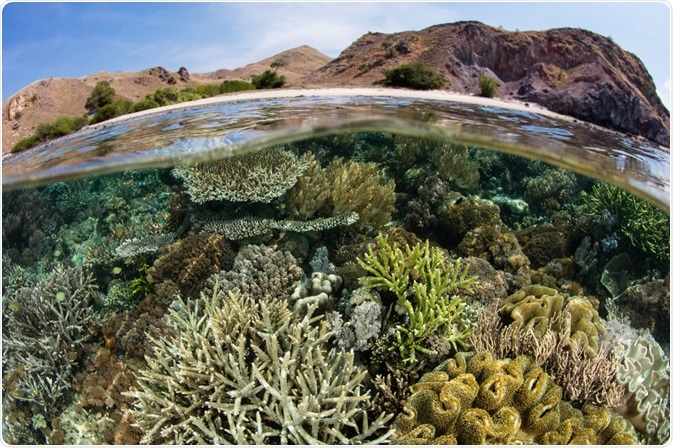What is biodiversity?
Biodiversity refers to the variety and variability of all life on earth. Due to the process of evolution, thousands of species of animals and plants now exist on the planet. Biodiversity encompasses the wide range of genes, species, and ecosystems that have become established on the planet, which intertwines and impact each other.

Image Credit: Ethan Daniels/Shutterstock.com
A multitude of factors impacts biodiversity, and scientists are interested in controlling these factors to prevent the reduction of natural biodiversity due to human interference.
Without biodiversity, day to day life would look completely different for humans. We rely on roughly 40,000 species every day, mostly without noticing. Our food, water, oxygen, and energy supplies all depend on biodiversity.
Medicine, the earth’s climate, and waste detoxification too all rely on maintaining biodiversity. For this reason, it is of paramount importance that we understand how human activity affects biodiversity to prevent its negative impact.
Here, we discuss the major impacts of human activity specifically on plant biodiversity and examine how this may be tackled.
How human activity impacts plant biodiversity
For decades we have understood that human activity is responsible for environmental changes. In general, these changes have been detrimental to the environment.
Scientists predict that within the next 50 to 100 years human activity will have created regional combinations of environmental conditions that may be inhabitable by many of the terrestrial plants that evolved to survive in particular regions.
This will likely force a significant amount of plant species to extinction. Therefore, human activity threatens to significantly reduce plant biodiversity.
Human activity manipulates many factors that are vital to maintaining the complex ecosystems in which thousands of plant species are adapted to. Factors such as the natural levels of numerous elements including nitrogen, calcium, phosphorus, and atmospheric CO2, as well as levels of herbivores, pathogens, and predators. Human activity also modifies the climate, which has a huge impact on life on the planet.
Ecosystems are fragile. Particular species thrive in certain ecosystems because they have physiologies, morphologies, and life histories that allow them to thrive within a specific set of environmental constraints.
Once these constraints are amended, the species is no longer optimally adapted for life there, and because human activity causes these constraints to modify rapidly, rather than throughout hundreds of years, natural selection cannot play a part in seeing the plants adapt to these new settings.
Once human activity changes even one constraint, many species that were once superior competitors can easily be displaced by just a few species that now have advantageous characteristics to best suit the environment. This can drastically change the ecosystem, and end in the extinction of plant species.
Below we outline the major ways in which human activity impacts plant biodiversity.
Population growth
The human population continues to grow exponentially. This is causing us to need more land to live on, to build more houses, hospitals, schools, supermarkets and more. It also means more crops are required and more waste is produced. As a result, the land is often cleared to make space for this.

Image Credit: Arthimedes/Shutterstock.com
Habits are built on or turned into farmland. The removal of these natural habits directly reduces the number of plants and can lead to some species becoming endangered due to a lack of an appropriate habitat to support them.
Deforestation
Deforestation reduces plant biodiversity both directly and indirectly. Directly it reduces plant biodiversity throughout the destruction of natural habitats. Indirectly it decreases biodiversity due to the techniques used in deforestation that emit carbon dioxide into the atmosphere, adding to global warming.
Slash and burn is a popular technique around the world for clearing forest areas, it involves burning the tree debris, releasing carbon dioxide as the plant waste burns.
It is estimated that as many as several hundred species of animals, plants, and insects are lost every day due to deforestation and other factors. Deforestation is causing plant species to become extinct and reducing biodiversity.
Fertilizer use
The overuse of fertilizers can reduce plant biodiversity by causing eutrophication. Fertilizers contain high levels of nitrates. When they are added to the soil, a proportion of the fertilizers runoff into rivers and lakes, introducing nitrates into these aquatic ecosystems.
Increased nitrate levels cause an overgrowth of the algae that live on the water’s surface, blocking out the light entering the water, and causing plants beneath the surface that rely on photosynthesis to die. Because of fertilizer use, the biodiversity of rivers and lakes is reducing.
Tourism
Tourism has numerous direct effects on biodiversity. Activities such as horse riding, mountain biking, and ATV driving not only trample the land and the plant life on it but also often require the clearing of habitats to provide space for this to take place.
Also, trails added into areas of high biodiversity can encourage certain species of weed to grow into the trails and out onto the roads, reducing the prevalence of other species.
Pathogens can also be introduced into ecosystems through tourism, and numbers of rare plants are sometimes reduced by human collection. It is estimated that around 72 plant taxa in Australia are currently under threat due to tourism.
Tackling the loss of plant biodiversity
While human activity is having a significant impact on plant biodiversity, fortunately, there are strategies in place to reduce this. Deforestation is being reduced and numerous initiatives are in place around the world to tackle greenhouse gases.
Reforestation is also underway, with trees being replanted to replace those cut-down. Recycling rates are on the rise, reducing the volume of waste entering landfill sites. Finally, more national parks are being set up to protect and develop endangered habitats.
Sources:
- Kelly, C., Pickering, C. and Buckley, R., 2003. Impacts of tourism on threatened plant taxa and communities in Australia. Ecological Management & Restoration, 4(1), pp.37-44. onlinelibrary.wiley.com/doi/abs/10.1046/j.1442-8903.2003.00136.x
- Tilman, D. and Lehman, C., 2001. Human-caused environmental change: Impacts on plant diversity and evolution. Proceedings of the National Academy of Sciences, 98(10), pp.5433-5440. https://www.pnas.org/doi/10.1073/pnas.091093198
- Pickering, C. and Hill, W., 2007. Impacts of recreation and tourism on plant biodiversity and vegetation in protected areas in Australia. Journal of Environmental Management, 85(4), pp.791-800. https://www.sciencedirect.com/science/article/pii/S030147970600377X
Further Reading
Last Updated: Aug 10, 2022